Day One.
18/01/18
 En route to Manila
En route to ManilaThat feeling lining up in the plane where you feel your head might roll off your neck and onto the floor from lack of oxygen. Is that a thing? Jetlag, over-tiredness and dehydration all share that persistent nausea of a lingering hangover; so here I am feeling like my eyes may roll back into my head any minute.
We have arrived in Manila.
There’s a lady handing out arrival cards for foreign passports, posing the same question to every isle, so I hear this repeated every time she takes a step: “Forenge passport? Forenge passport? Forenge passport?”.
The crackle of an intercom and an over-exaggerated American accent begins to speak. That recognisable Filipino accent, replete with the comforting roll of rrrrrr in words I’m not used to hearing this consonant so grandiosely expressed. “Please rrremain in yourrr seats.” There’s also a characteristic modulation at the end of each spoken phrase, a musical rise and fall: picture the way a perfect customer service rep might speak to a small child but minus any condescension, so, perhaps the small child of a very notable celebrity.
We’re the last to exit the plane because our carry-on luggage is in an overhead locker four rows behind us. Why? Because the overhead lockers directly above us are already bursting with the luggage of the passengers four rows ahead of us: returning titas and titos (aunties and uncles) who work overseas jobs and have filled both their check-in and carry-on luggage with pasalubong (presents) for their children and nieces and nephews.
The one-sided arrival card in my hands feels paper thin in my fingertips, not like the smooth, thick matte card I’m used to holding when arriving in a new country. It has a ‘handcrafted’ feel to it: as if the card were cut with scissors. Faded ink and jagged lines through the letters where the printer has stammered a little. To pass the time, I look for spelling errors in the English wording.
* * *
![]()
At the baggage claim there’s a white guy with a square head, about 30. He’s speaking in something that sounds like a French accent. He is wearing a pastel blue suit jacket that is too tight and has a big satin sash draped across his broad shoulders, embroidered with black text in the Times New Roman of the 1990s: “INTERNATIONALE L'EUROPE”.
Someone tell me what this means?
I want to take photos of the large portable air-conditioning units placed at various points in the security checkpoint with large extension cables running across the floor. They’re clunky, creamy off-white, analogue, boxy, about two metres high and look like something from 2001: A Space Odyssey. But there are NO PHOTOS allowed and the security guards have guns.
Mum follows the red lines on the floor towards the checkpoint “GOODS TO DECLARE”: we have suitcases filled with food products. We pass three airport girls with lanyards, leaning over a counter, giggling at something on a large generic Android phone, they look up casually, but no one says a word. We turn a corner: we are out of the airport. I guess the little checkbox that says “ITEMS TO DECLARE” doesn’t really concern anybody here.
As we push the luggage trolley along the glossy laminated floor, I see six large advertisements from floor to ceiling on a series of large pillars. They all have different pale-skinned Pinoy models with perfect white teeth and blemish-free faces holding a metallic phone:
“OPPO: Selfie Expert. Capture The Real You”.
“OPPO: Selfie Expert. Capture The Real You”.
“OPPO: Selfie Expert. Capture The Real You”.
“OPPO: Selfie Expert. Capture The Real You”.
“OPPO: Selfie Expert. Capture The Real You”.
“OPPO: Selfie Expert. Capture The Real You”.
Mum said to them, ‘we will meet you at the A-J airport pick-up point’. Turns out the airport was renovated several years ago: the pick-up bays are now numbered. We don’t have a simcard and the Free WiFi isn’t working even though the small upturned pyramid in the top left corner of my phone is bold and hopeful.
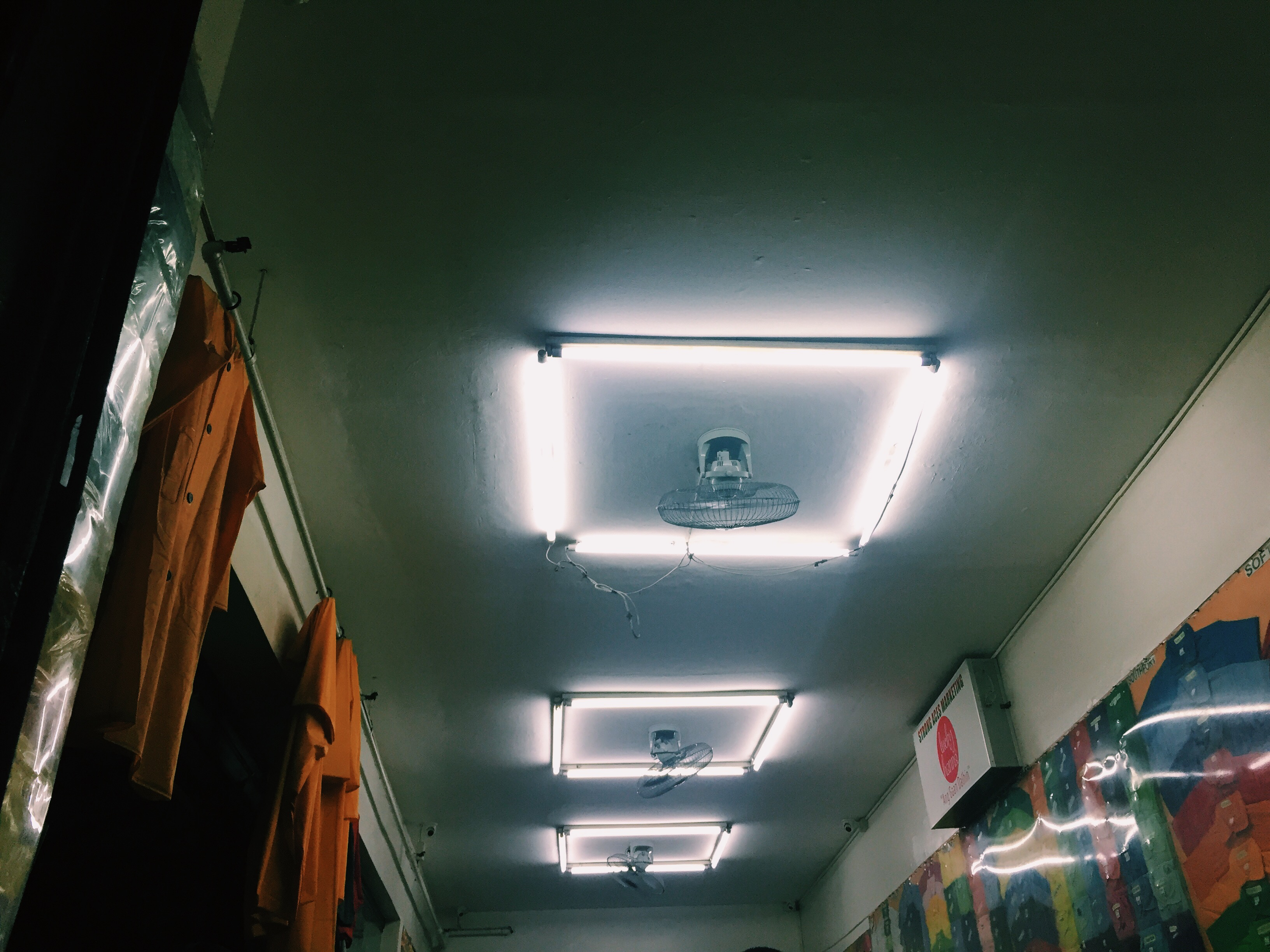
At the baggage claim there’s a white guy with a square head, about 30. He’s speaking in something that sounds like a French accent. He is wearing a pastel blue suit jacket that is too tight and has a big satin sash draped across his broad shoulders, embroidered with black text in the Times New Roman of the 1990s: “INTERNATIONALE L'EUROPE”.
Someone tell me what this means?
I want to take photos of the large portable air-conditioning units placed at various points in the security checkpoint with large extension cables running across the floor. They’re clunky, creamy off-white, analogue, boxy, about two metres high and look like something from 2001: A Space Odyssey. But there are NO PHOTOS allowed and the security guards have guns.
Mum follows the red lines on the floor towards the checkpoint “GOODS TO DECLARE”: we have suitcases filled with food products. We pass three airport girls with lanyards, leaning over a counter, giggling at something on a large generic Android phone, they look up casually, but no one says a word. We turn a corner: we are out of the airport. I guess the little checkbox that says “ITEMS TO DECLARE” doesn’t really concern anybody here.
As we push the luggage trolley along the glossy laminated floor, I see six large advertisements from floor to ceiling on a series of large pillars. They all have different pale-skinned Pinoy models with perfect white teeth and blemish-free faces holding a metallic phone:
“OPPO: Selfie Expert. Capture The Real You”.
“OPPO: Selfie Expert. Capture The Real You”.
“OPPO: Selfie Expert. Capture The Real You”.
“OPPO: Selfie Expert. Capture The Real You”.
“OPPO: Selfie Expert. Capture The Real You”.
“OPPO: Selfie Expert. Capture The Real You”.
Mum said to them, ‘we will meet you at the A-J airport pick-up point’. Turns out the airport was renovated several years ago: the pick-up bays are now numbered. We don’t have a simcard and the Free WiFi isn’t working even though the small upturned pyramid in the top left corner of my phone is bold and hopeful.
* * *
![]()
![]()
There’s a smell in the air that I recognise from seven years ago (the last time I was here): a particular type of shampoo mingled with Surf laundry powder, both of which must be quite popular here (or cost-effective at the supermarket). There’s also the smell of BBQ smoke from street food, which creates a cinematic haze across the city lights; film fog, so noir. There’s a dampness and a staleness in the air too, like car air-con vents when you first turn the dials after winter is over. Add a hint of old sour soap, rice, and wet dog (although there are a few stray dogs circling the general vicinity right now, so that could explain it.) A sweetness sprinkles the air too, but more the refined white sugar kind, rather than the fragrant honey kind.
I’m very good with smells. I remember the smells of countries, of cities, of houses, I guess of people too. So, beware. (Although I humbly admit that if anyone was as aware of smells as I am, you’d probably notice that half the time, I’ve hurriedly splashed on an old bottle of perfume that has turned, and now holds its original fragrant scent along with overtones of a turpentine and tobacco-like nature. I personally quite like it, which is why I still keep those dusty old bottles in my bedroom).
![]()
![]()
Wires across a city street in Manila

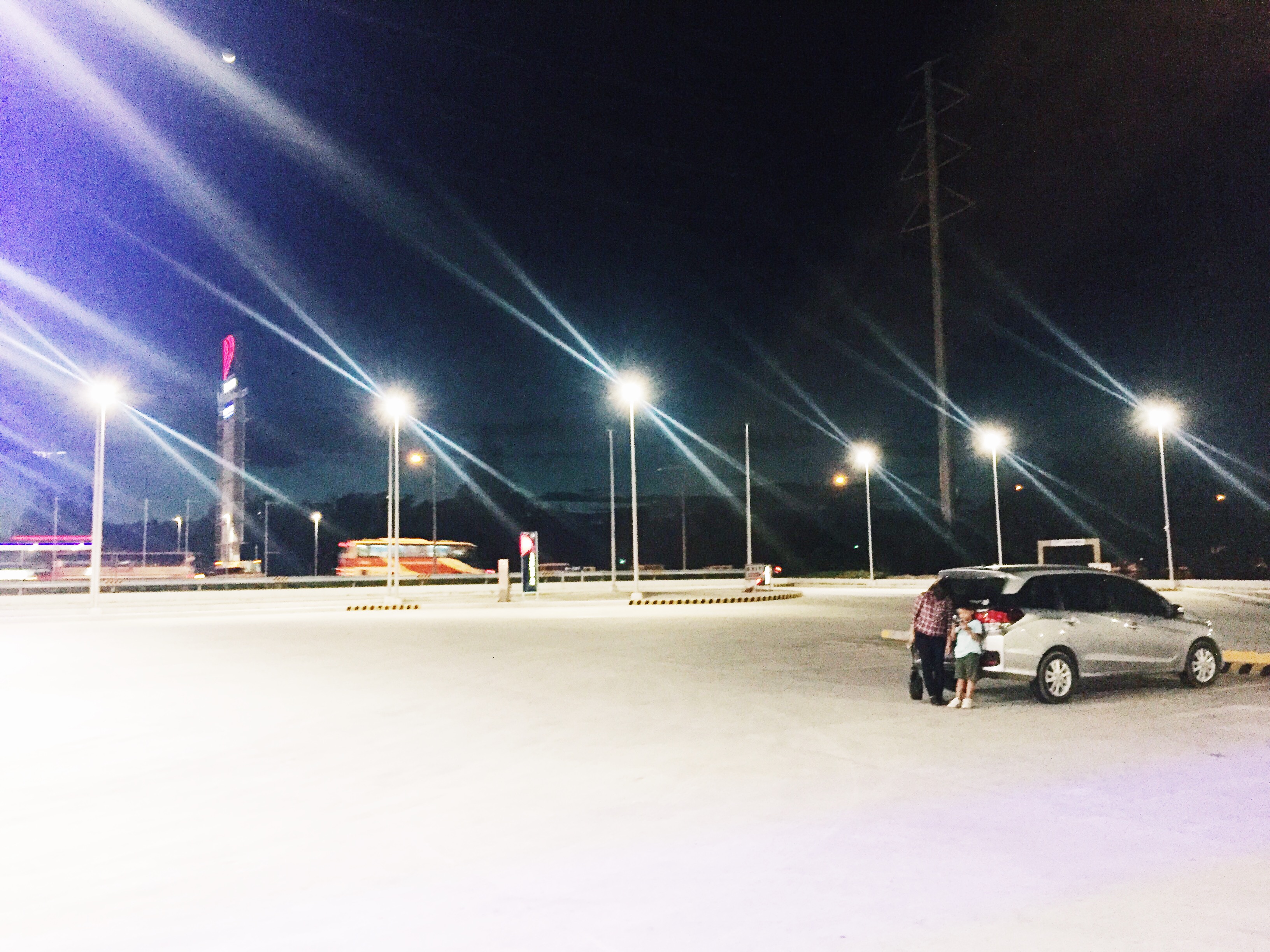
There’s a smell in the air that I recognise from seven years ago (the last time I was here): a particular type of shampoo mingled with Surf laundry powder, both of which must be quite popular here (or cost-effective at the supermarket). There’s also the smell of BBQ smoke from street food, which creates a cinematic haze across the city lights; film fog, so noir. There’s a dampness and a staleness in the air too, like car air-con vents when you first turn the dials after winter is over. Add a hint of old sour soap, rice, and wet dog (although there are a few stray dogs circling the general vicinity right now, so that could explain it.) A sweetness sprinkles the air too, but more the refined white sugar kind, rather than the fragrant honey kind.
I’m very good with smells. I remember the smells of countries, of cities, of houses, I guess of people too. So, beware. (Although I humbly admit that if anyone was as aware of smells as I am, you’d probably notice that half the time, I’ve hurriedly splashed on an old bottle of perfume that has turned, and now holds its original fragrant scent along with overtones of a turpentine and tobacco-like nature. I personally quite like it, which is why I still keep those dusty old bottles in my bedroom).
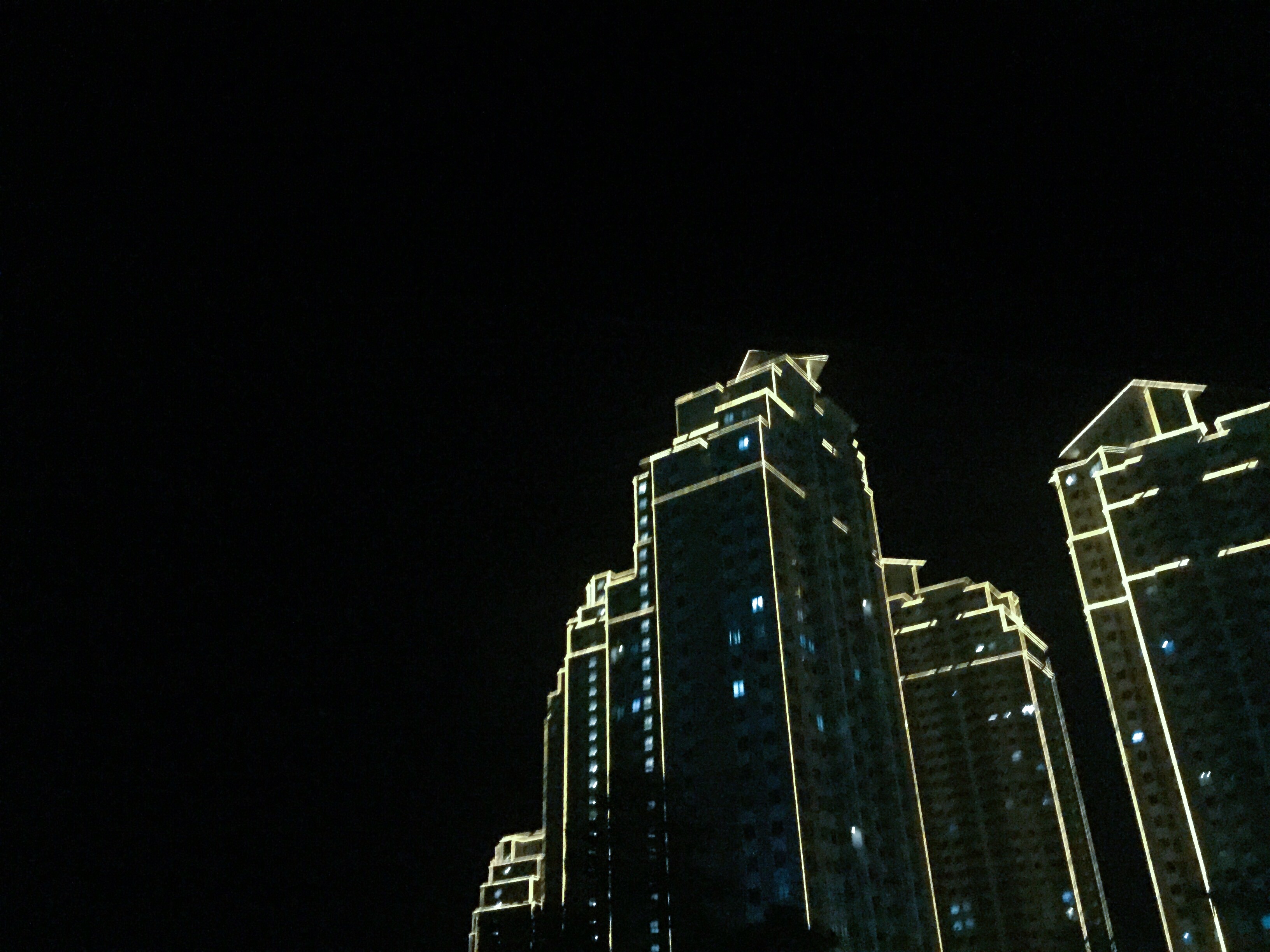

Wires across a city street in Manila
* * *
There are no lanes on the road. Well, there are painted lines on the road, but no one pays attention to them. You are too busy looking for the next free spot to open up and to quickly change lanes without indicating so that your vehicle wins the battle to fill that blank space. You continue this exercise until you have found your way home, by jumping from empty road space to empty road space. Be mindful that you play this game not only with cars, but with the following:
- Jeepneys: open-ended ‘jeeps’ that seat around 24 people, not counting the six or so people hanging on at the back like train jumpers or stowaways.
- Tricycles: little side carts attached to motorbikes which carry anything from passengers, to piles of vegetables, to cages of chickens, to fans and electrical appliances, to small store fronts, to pigs.
- Motorbikes: which fearlessly weave between traffic, often on the wrong side of the road, and often without helmets.
- Cyclists: who must surely be either mad, blind, or suicidal.
- Street sellers on foot: weaving in and out of traffic like it’s nobody’s business. There’s a man outside my passenger window selling bags of chicharon (pork crackling), about fifteen bags on each side, hanging off the metal pole across his back.
![]()
The front and side of a jeepney.
![]()
Boy eating street food in a parked tricycle.
On googlemaps we are 30mins away from the airport. Because of the traffic at 8pm, that will take us 5hrs. I complain back home when traffic doubles my trip. This is x 10, and it’s not abnormal. This makes it all the more special that someone would volunteer to come and pick us up from the airport - close friends of my mum and dad's from back in the day. It's an apt demonstration of the heart Pilipino's have for community and family. When's the last time you cheerfully offered someone a ride home, knowing it'd be a 10hr return-trip?
There are four of us in the backseat and no one has a seatbelt on. The little six-year old who keeps grinning up at me (he’s missing his two front teeth) and snarling like a wild cat, is now lying on top of the luggage in the boot. And now he’s got his two hands into balled fists and he’s planking on the seatback with his head sticking out “Superrrman. Superrman.” And now he’s squatting on the floor, hunting for treasure beneath the driver’s seat.
There are no lanes on the road. Well, there are painted lines on the road, but no one pays attention to them. You are too busy looking for the next free spot to open up and to quickly change lanes without indicating so that your vehicle wins the battle to fill that blank space. You continue this exercise until you have found your way home, by jumping from empty road space to empty road space. Be mindful that you play this game not only with cars, but with the following:
- Jeepneys: open-ended ‘jeeps’ that seat around 24 people, not counting the six or so people hanging on at the back like train jumpers or stowaways.
- Tricycles: little side carts attached to motorbikes which carry anything from passengers, to piles of vegetables, to cages of chickens, to fans and electrical appliances, to small store fronts, to pigs.
- Motorbikes: which fearlessly weave between traffic, often on the wrong side of the road, and often without helmets.
- Cyclists: who must surely be either mad, blind, or suicidal.
- Street sellers on foot: weaving in and out of traffic like it’s nobody’s business. There’s a man outside my passenger window selling bags of chicharon (pork crackling), about fifteen bags on each side, hanging off the metal pole across his back.
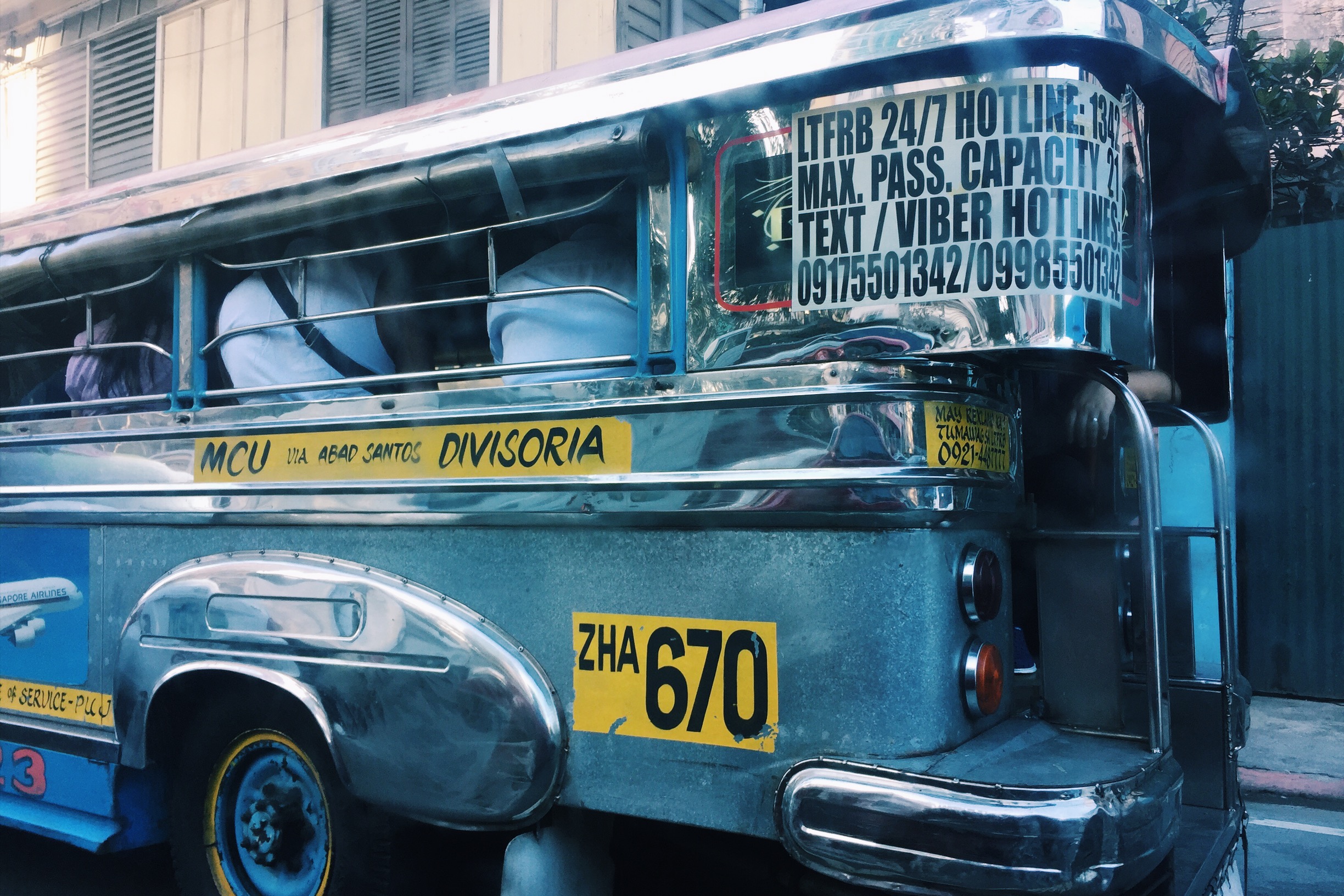
The front and side of a jeepney.
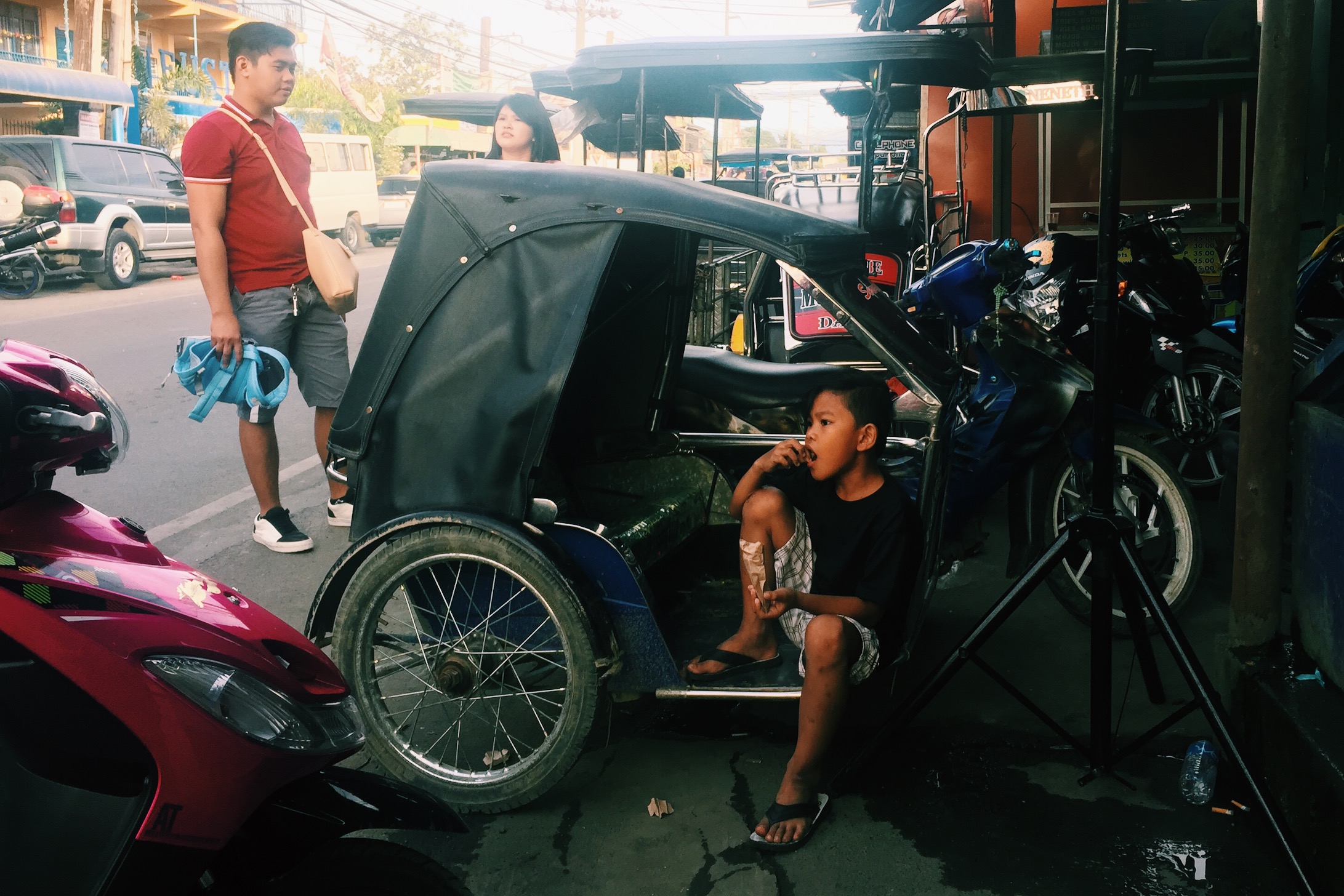
Boy eating street food in a parked tricycle.
On googlemaps we are 30mins away from the airport. Because of the traffic at 8pm, that will take us 5hrs. I complain back home when traffic doubles my trip. This is x 10, and it’s not abnormal. This makes it all the more special that someone would volunteer to come and pick us up from the airport - close friends of my mum and dad's from back in the day. It's an apt demonstration of the heart Pilipino's have for community and family. When's the last time you cheerfully offered someone a ride home, knowing it'd be a 10hr return-trip?
There are four of us in the backseat and no one has a seatbelt on. The little six-year old who keeps grinning up at me (he’s missing his two front teeth) and snarling like a wild cat, is now lying on top of the luggage in the boot. And now he’s got his two hands into balled fists and he’s planking on the seatback with his head sticking out “Superrrman. Superrman.” And now he’s squatting on the floor, hunting for treasure beneath the driver’s seat.
* * *
“Mama”, I whisper, “do I say ‘po’ at the end of everything?”
‘Po’ in Tagalog (national language of the Philippines), is a sign of respect that you tack onto the end of questions, answers, statements, and amidst general conversation to those older than you. I still haven’t quite figured out the frequency it is to be used, but I am aware that the longer I take to figure it out, the more people I inadvertently may offend. I think of so many gestures and habits of social transaction that fail to transcend cultural barriers – in Australia for example: someone burping loudly after a meal, eating with their mouth open, spitting in public, talking loudly on a train, avoiding eye contact. In some cultures, these things are commonly accepted behaviour, some even a sign of respect or appreciation.
“Mama”, I whisper, “do I say ‘po’ at the end of everything?”
‘Po’ in Tagalog (national language of the Philippines), is a sign of respect that you tack onto the end of questions, answers, statements, and amidst general conversation to those older than you. I still haven’t quite figured out the frequency it is to be used, but I am aware that the longer I take to figure it out, the more people I inadvertently may offend. I think of so many gestures and habits of social transaction that fail to transcend cultural barriers – in Australia for example: someone burping loudly after a meal, eating with their mouth open, spitting in public, talking loudly on a train, avoiding eye contact. In some cultures, these things are commonly accepted behaviour, some even a sign of respect or appreciation.
* * *
All across Manilla: the lights are cool white, not the warm tungsten kind that we’ve come to associate with homely, interior spaces – candlelight, lamp shades, fairy-lights. Passing by the car window: whether they are strips of fluorescent tubes in towering clone-like office blocks; or naked bulbs dangling above late night street vendors stalls; or house lights veiled by thin curtains and mosquito nets, or colossal billboards; the sum total glow of the city is a general cold white (with a touch of green) which contributes to a post-apocalyptic, Fincher-esque milieu. Reminiscent of the Blade Runner 2049 soundscape, there’s the reverberating splutter of exhaust pipes – a harsh, guttural snarl that’s much more obtrusive than what I’m used to. Shakes you right in the pit of your stomach. It’s a rare sight to spot a touch of gold or caramel in the hazy glow. The closest you’ll get to a warm light as you shoot across the freeway is the double arch of a big yellow “M” (NB. Philippines colloquial: McDo; Australian colloquial: Maccas; American colloquial: Mickey D’s). And, just for fun, this one gets it’s own stand-alone sentence: in Canada, the old Golden Archway is simply referred to as ‘McDick’s’.
![]()
![]()
A young boy 'busking' on the back of a jeepney (aka singing his heart out to the moon as the jeepney weaves through congested city traffic)
All across Manilla: the lights are cool white, not the warm tungsten kind that we’ve come to associate with homely, interior spaces – candlelight, lamp shades, fairy-lights. Passing by the car window: whether they are strips of fluorescent tubes in towering clone-like office blocks; or naked bulbs dangling above late night street vendors stalls; or house lights veiled by thin curtains and mosquito nets, or colossal billboards; the sum total glow of the city is a general cold white (with a touch of green) which contributes to a post-apocalyptic, Fincher-esque milieu. Reminiscent of the Blade Runner 2049 soundscape, there’s the reverberating splutter of exhaust pipes – a harsh, guttural snarl that’s much more obtrusive than what I’m used to. Shakes you right in the pit of your stomach. It’s a rare sight to spot a touch of gold or caramel in the hazy glow. The closest you’ll get to a warm light as you shoot across the freeway is the double arch of a big yellow “M” (NB. Philippines colloquial: McDo; Australian colloquial: Maccas; American colloquial: Mickey D’s). And, just for fun, this one gets it’s own stand-alone sentence: in Canada, the old Golden Archway is simply referred to as ‘McDick’s’.

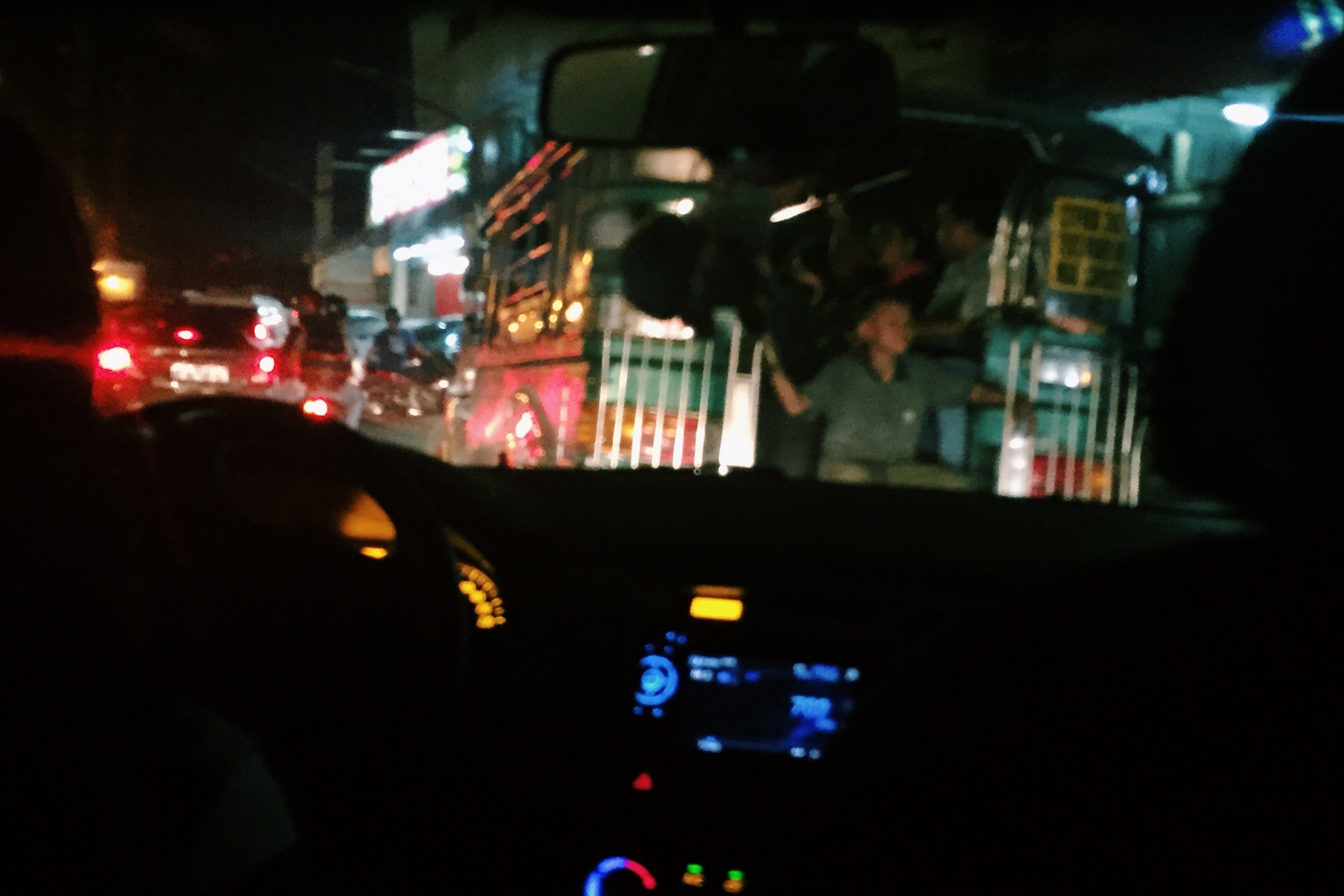
A young boy 'busking' on the back of a jeepney (aka singing his heart out to the moon as the jeepney weaves through congested city traffic)
* * *
We open the front door and I try to keep my head on my shoulders as I trudge up the stairs with my suitcase. It’s humid, I haven’t slept, I am exhausted. The only thing that’s keeping me smiling is the lively 6-year-old (did someone give him sugar?) who is now pointing at something on the wall, in the corner of the stairwell shrieking, “IPIS! IPIS! IPIS!” (Cockroach! Cockroach! Cockroach!). He grabs the chinelas (NB. Australian colloquial: thongs, Kiwi colloquial: jandals, American colloquial: flip-flops) and smacks it once. He screams as it squirms. I finish it off. He grins up, appreciative. We have bonded over our common enemy.
We open the front door and I try to keep my head on my shoulders as I trudge up the stairs with my suitcase. It’s humid, I haven’t slept, I am exhausted. The only thing that’s keeping me smiling is the lively 6-year-old (did someone give him sugar?) who is now pointing at something on the wall, in the corner of the stairwell shrieking, “IPIS! IPIS! IPIS!” (Cockroach! Cockroach! Cockroach!). He grabs the chinelas (NB. Australian colloquial: thongs, Kiwi colloquial: jandals, American colloquial: flip-flops) and smacks it once. He screams as it squirms. I finish it off. He grins up, appreciative. We have bonded over our common enemy.